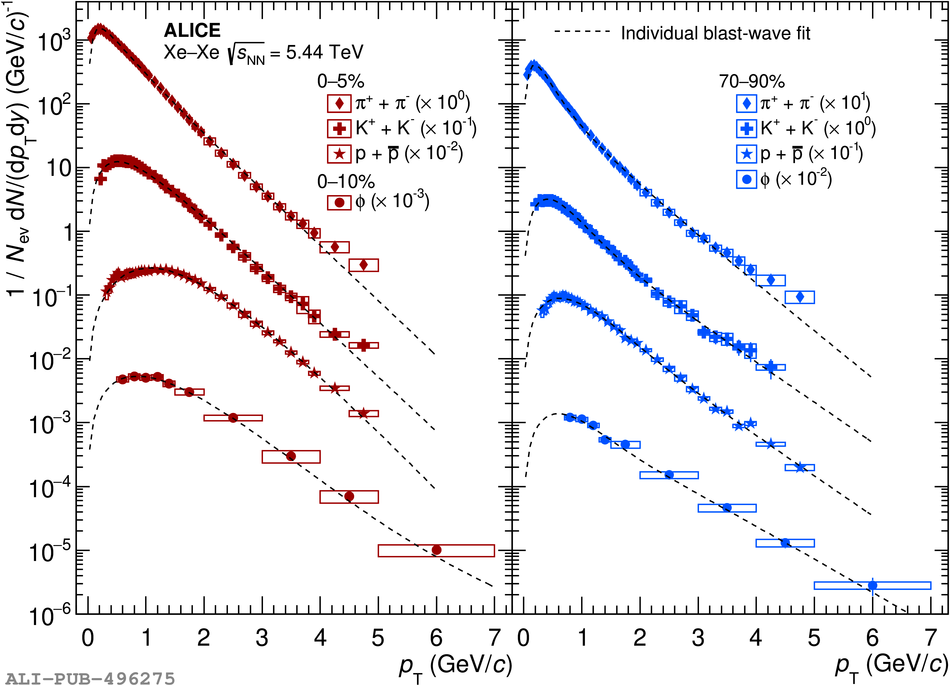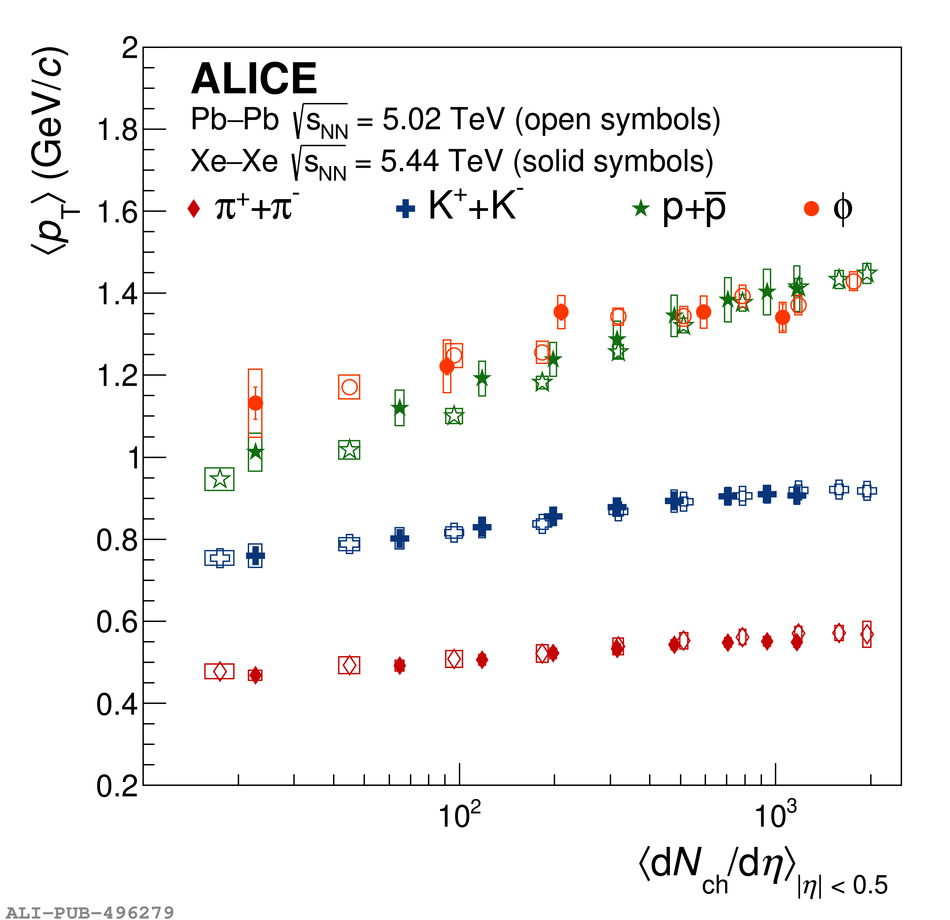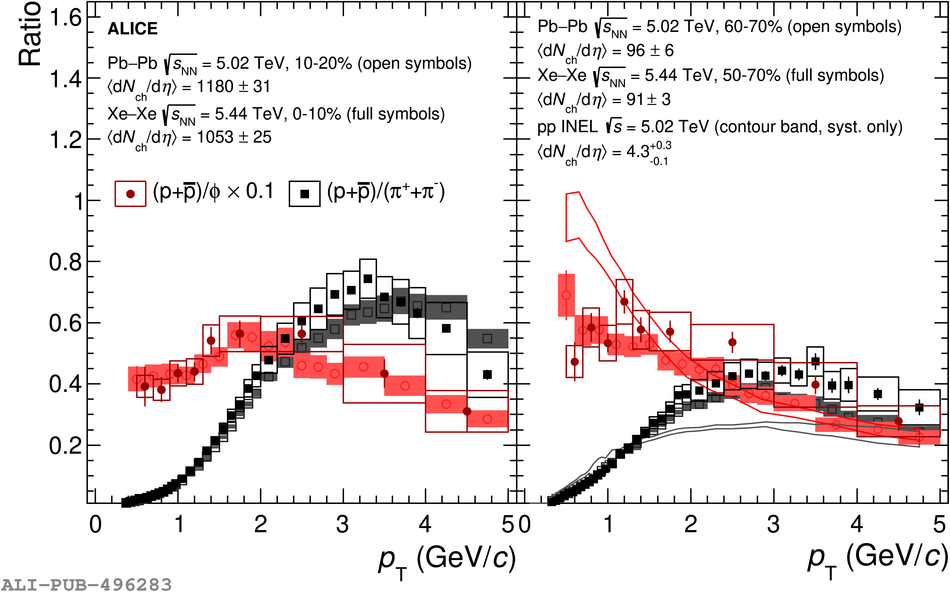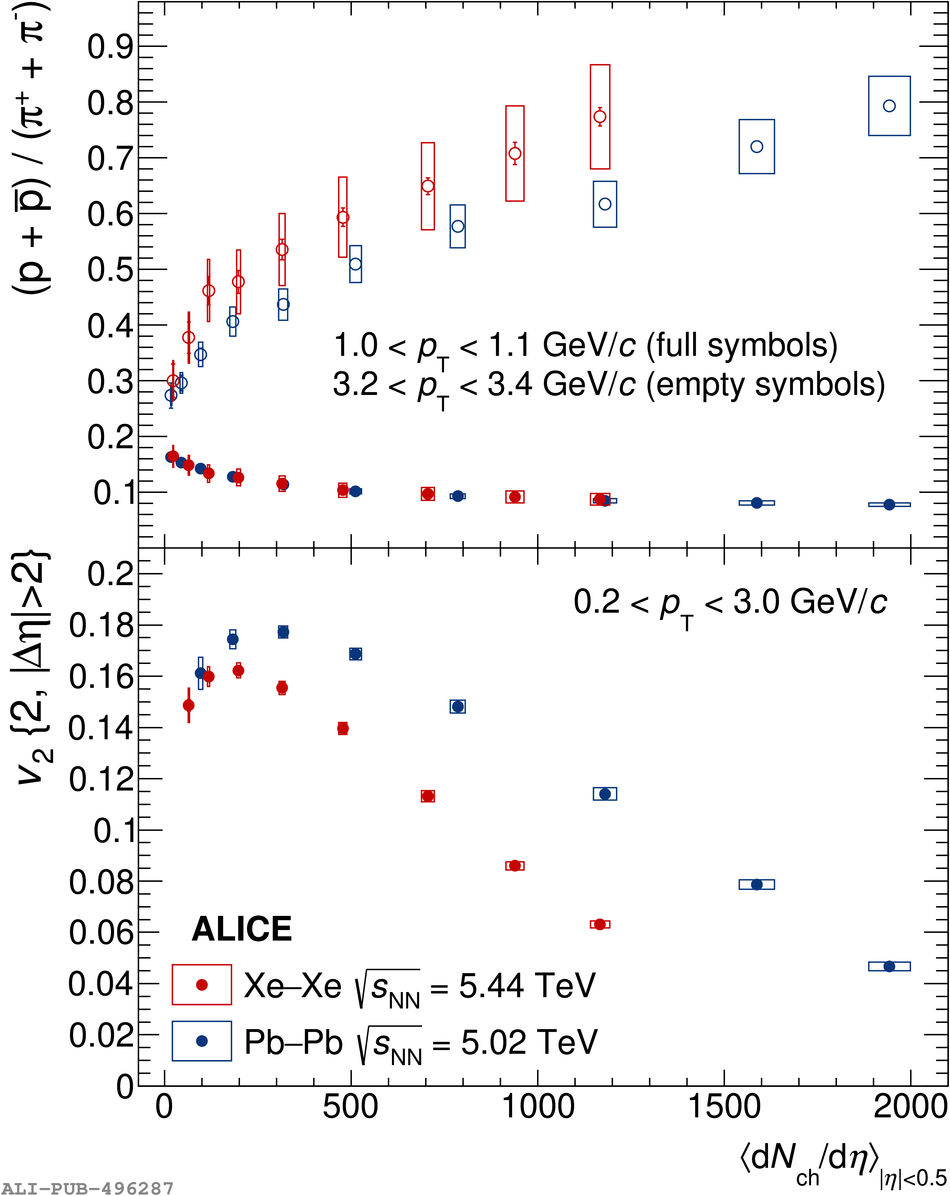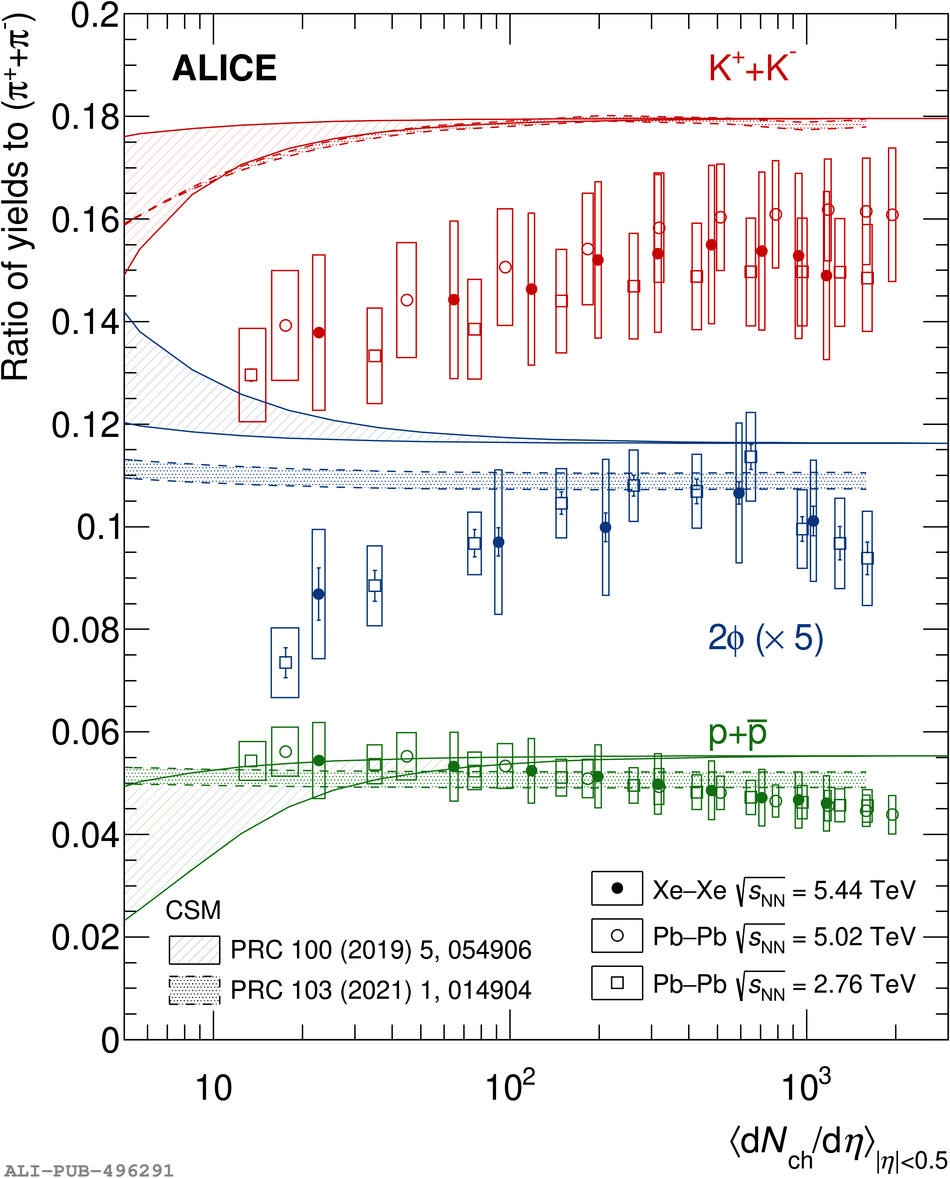The first measurement of the production of pions, kaons, (anti-)protons and $\phi$ mesons at midrapidity in Xe-Xe collisions at $\sqrt{s_{\rm NN}} = 5.44$ TeV is presented. Transverse momentum ($p_{\rm T}$) spectra and $p_{\rm T}$-integrated yields are extracted in several centrality intervals bridging from p-Pb to mid-central Pb-Pb collisions in terms of final-state multiplicity. The study of Xe-Xe and Pb-Pb collisions allows systems at similar charged-particle multiplicities but with different initial geometrical eccentricities to be investigated. A detailed comparison of the spectral shapes in the two systems reveals an opposite behaviour for radial and elliptic flow. In particular, this study shows that the radial flow does not depend on the colliding system when compared at similar charged-particle multiplicity. In terms of hadron chemistry, the previously observed smooth evolution of particle ratios with multiplicity from small to large collision systems is also found to hold in Xe-Xe. In addition, our results confirm that two remarkable features of particle production at LHC energies are also valid in the collision of medium-sized nuclei: the lower proton-to-pion ratio with respect to the thermal model expectations and the increase of the $\phi$-to-pion ratio with increasing final-state multiplicity.
Eur. Phys. J. C 81 (2021) 584
HEP Data
e-Print: arXiv:2101.03100 | PDF | inSPIRE
CERN-EP-2020-249
Figure group

